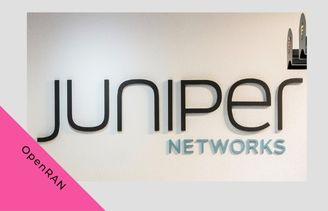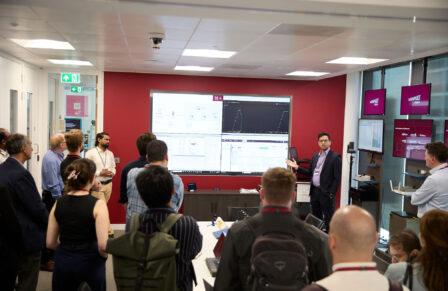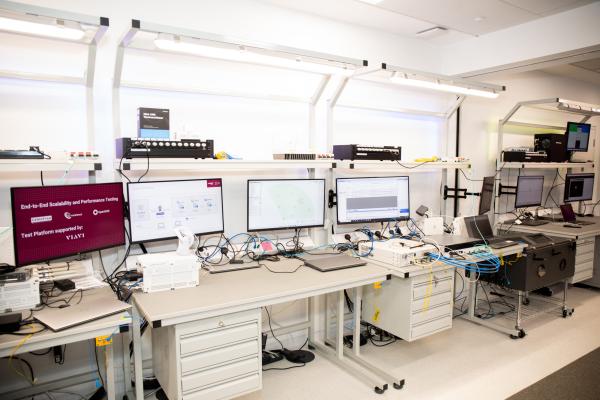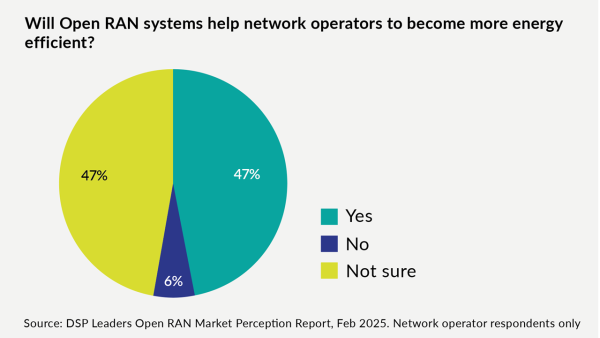
Written by Ray Le Maistre of TelecomTV
Vodafone has put Juniper’s RAN intelligent controller (RIC) through its paces
- The RIC was included in a trial using real data on Vodafone Turkey’s live network
- Apps from Juniper and Parallel Wireless were deployed
- The RIC has “tremendous potential”, according to Vodafone executive Paco Martin
Expect to hear a lot of talk about the RAN intelligent controller (RIC) in the coming weeks as developers, vendors and operators gather at MWC23 in Barcelona to discuss, and show off, the latest mobile network developments. Among those with some RIC news to share are Vodafone, Juniper Networks and Parallel Wireless, which undertook a trial in Turkey on the operator’s commercial network using live traffic and found that the use of a RIC platform and associated applications can improve network efficiencies and reduce operating costs.
While a RIC system can be put to work in any mobile network, it is most commonly associated with Open RAN developments, as the RIC will essentially be the supporting operating system and ‘brain’ of mature Open RAN deployments, running multiple applications on one of the two versions. The near-real time RIC, which is for critical, fast-response, low-latency, network-optimisation applications (xApps) that require response times of between 10 milliseconds and 1 second, such as beamforming; and the non-real time RIC, which will run applications (rApps) that are responsible for actions that take more than 1 second, such as subscriber data management, quality-of-experience monitoring and so on.
And while Vodafone does have ongoing Open RAN trials in multiple markets, including the UK and Germany, it has been putting Juniper’s RIC through its paces in Turkey, where Vodafone, Juniper and Parallel Wireless announced lab trials of the RIC and associated apps this time last year – see Turkish delight for Juniper as Vodafone tests its RIC in Open RAN lab.
According to the partners, the “successful field trial” validated admission control and traffic-steering applications running on Juniper’s RIC on an Open RAN network underpinned by Parallel Wireless RAN software.
The admission control use case was an all-Juniper affair, with the vendor providing the required rApp and xApp that enabled “real-time tracking and optimisation of radio resources… [and] the dynamic allocation of network resources without the need for over-provisioning all the way to specific customers, therefore improving resource management and network efficiency.” The outcome? “Cost savings with streamlined operations and reduced equipment needs while providing a higher quality of service to end users,” according to Juniper.
The traffic-steering xApp, though, came from Parallel Wireless, and was deployed in conjunction with a Juniper rApp to “dynamically and automatically” distribute network load. “Based on the traffic/cell conditions in Vodafone’s live network, throughput improvements of 40% were observed for users that were experiencing low performance due to cell overload, and an average of 15% to 30% improvement was observed across all users in the overloaded cell. This application efficiently utilises operator resources to meet capacity demands without requiring manual intervention, thereby helping to reduce costs and to minimise errors,” noted Juniper.
The vendor added: “Both use cases successfully demonstrate that user experience can be managed and optimised automatically by the RIC, based on real-time data insights,” and that the deployment of applications such as admission control and traffic steering can help to reduce power consumption and help operators avoid unnecessary capital investments.
“We have a clear vision that Open RAN will transform networks into open platforms for innovation,” noted Paco Martin, Vodafone’s head of Open RAN. “The success of this trial represents the first RIC deployment in our live commercial network, aligned with the O-RAN Alliance specifications. We were pleased to come together with our partners, Juniper Networks and Parallel Wireless, to validate the successful performance of third-party app integration, demonstrating the power of openness and intelligence. There is tremendous potential in the RIC space outside of traditional use cases, and this represents only the beginning of demonstrating the full potential of Open RAN,” he added.
Constantine Polychronopoulos, group VP of 5G and telco cloud at Juniper Networks, said: “This successful trial is a testament to the clear focus on open interfaces and multi-vendor interoperability that the Juniper carrier-grade RIC platform represents. The trial serves as a significant stepping stone that will spur further innovation in the Open RAN space.”
Vodafone and Juniper are now set to develop further RIC use cases related to energy efficiency and the optimisation of massive MIMO deployments while validating the use of further third-party rApps and xApps using the Juniper RIC’s software development kit (SDK) and APIs.
For further insights into RIC developments, check out the second episode of TelecomTV’s new monthly programme, The Open RAN Show, which this month is focused on the RIC. The episode will be available to view on demand from 12pm (UK) on Friday 24 February right here.
Read the original article here









